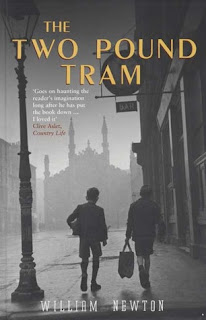hosted by Gina at Dragon's Lair
2019
Guidelines are pretty simple. Choose a level to aim for and submit your list at the end. My reading has slowed down the past couple years, so I'm going for the Teen level (104 books) in 2019.
I have now completed my 104--still hoping that I'll exceed that....
Thanks for hosting, Gina!
My List:
1. The Ascent of Rum Doodle by W. E. Bowman (1/2/19)
2. The Winter Women Murders by David A Kaufelt (1/5/19)
3. Died in the Wool by Ngaio Marsh (1/7/19)
4. I Am Capatin Kirk by Frank Berrios (1/8/19)
5. I Am Mr. Spock by Elizabeth Schaefer (1/8/19)
6. An African Millionaire by Grant Allen (1/10/19)
7. Clouds of Witness by Dorothy L Sayers (1/12/19)
8. The Dead Shall Be Raised by George Bellairs (1/13/19)
9. The Murder of a Quack by George Bellairs (1/14/19)
10. A Whiff of Cyanide by Guy Fraser-Sampson (1/15/19)
11. The Haunted Man & The Haunted House by Charles Dickens (1/16/19)
12. The Mysterious Affair at Styles by Agatha Christie (1/18/19)
13. Tales of Terror & Mystery by Sir Arthur Conan Doyle (1/23/19)
14. Hitler's First Victims by Timothy W. Ryback (1/24/19)
15. The Secret Files of Sherlock Holmes by June Thomson (1/25/19)
16. The Secret Adversary by Agatha Christie (1/25/19)
17. Tower of London: A Chilling Interactive Adventure by Blake Hoena (1/26/19)
18. Terror on the Titanic by Jim Wallace (1/27/19)
19. Blind Corner by Dornford Yates (1/27/19)
20. A Death in the Night by Guy Fraser-Sampson (1/30/19)
21. Zion's Fiction by Sheldon Teitelbaum & Emanuel Lottem, eds (2/6/19)
22. A Treasury of Great Recipes by Mary & Vincent Price (2/13/19)
23. Final Curtain by Ngaio Marsh (2/14/19)
24. Blood of the North by James B. Hendryx (2/15/19)
25. Where the Snow Was Red by Hugh Pentecost (2/16/19)
26. A Wrinkle in Time by Madeline L'Engle (2/17/19)
27. Night of the Fox by Jack Higgins (2/19/19))
28. No Patent on Murder by Akimitsu Takagi (2/21/19)
29. Monsieur Lecoq by Emile Gaboriau (2/27/19)
30. The Lucky Stiff by Craig Rice (3/1/19)
31. Code Talker by Chester Nez w/Judith Schieff Avila (3/9/19)
32. Murder on the Links by Agatha Christie (3/9/19)
33. A Wreath for Rivera by Ngaio Marsh (3/11/19)
34. Murdered: One by One by Francis Beeding (3/16/19)
35. Books to Die For by John Connolly & Declan Burke (3/22/19)
36. Mr. Churchill's Secretary by Susan Elia MacNeal (3/23/19)
37. Whose Body? by Dorothy L. Sayers (3/24/19)
38. Becoming by Michelle Obama (3/27/19)
39. The Man Born to Be King by Dorothy L Sayers (3/31/19)
40. A Knife in the Back by Bill Crider (4/2/19)
41. Opening Night by Ngaio Marsh (4/4/19)
42. Mossflower by Brian Jacques (4/8/19)
43. Swing, Brother, Swing by Ngaio Marsh (4/6/19) [audio novel version]
44. When in Rome/Opening Night by Ngaio Marsh (4/11/19) [BBC audio]
45. The Man in the Brown Suit by Agatha Christie (4/13/19)
46. Gallows Court by Martin Edwards (4/13/19)
47. The Pocket Detective: 100+ Puzzles by Kate Jackson (4/19/19)
48. Murder at the Mardi Gras by Elisabet M. Stone (4/20/19)
49. A Girl of the Limberlost by Gene Stratton-Porter (4/22/19)
50. Trixie Belden & the Mystery on the Mississippi by Kathryn Kenny (4/23/19)
51. Lord Peter Views the Body by Dorothy L. Sayers (4/23/19)
52. The March Hare Murders by Elizabeth Ferrars (4/23/19)
53. Murder in a Nunnery by Eric Shepherd (4/26/19)
54. Murder Must Advertise by Dorothy L. Sayers (4/28/19)
55. Is Skin Deep, Is Fatal by H.R.F. Keating (5/1/19)
56. Behold, Here's Poison by Georgette Heyer (5/3/19)
57. Murder at the 42nd Street Library (5/5/19)
58. Spinster in Jeopardy by Ngaio Marsh (5/6/19)
59. Death on a Warm Wind by Douglas Warner (5/8/19)
60. Strong Poison by Dorothy L. Sayers (5/11/19)
61. Poirot Investigates by Agatha Christie (5/12/19)//
62. Miss Agatha Doubles for Death by H.L.V. Fletcher (5/16/19)
63. The Lover by Laura Wilson (5/17/19)
64. The Five Red Herrings by Dorothy L. Sayers (5/19/19)
65. Beverly Gray's Island Adventure by Clair Blank (5/21/19)
66. The Cream of Crime edited by Jeanne F. Bernkopf (5/26/19)
67. The Barrakee Mystery by Arthur W. Upfield (6/1/19)
68. River of Darkness by Rennie Airth (6/3/19)
69. The Secret of Chimneys by Agatha Christie (6/6/19)
70. The Hound of the Baskervilles by Sir Arthur Conan Doyle (6/13/19)
71. Scales of Justice by Ngaio Marsh (6/16/19)
72. The Father Hunt by Rex Stout (6/18/19)
73. Killing the Goose by Frances & Richard Lockridge (6/24/19)
74. Mystery of the Emerald Buddha by Betty Cavanna (6/29/19)
75. Gaudy Night by Dorothy L. Sayers (7/1/19)
76. Death of a Fool by Ngaio Marsh (7/7/19)
78. The Notting Hill Mystery by Charles Warren Adams (7/12/19)
79. A Passage to India by E. M. Forster (7/21/19)
80. Tenant for the Tomb by Anthony Gilbert (7/28/19)
81. 4:50 from Paddington by Agatha Christie (7/28/19)
82. The Mystery of the Fire Dragon by Carolyn Keene (7/29/19)
83. A Hard Rain by Dean Wesley Smith (7/31/19)
84. And Then There Were None by Agatha Christie (8/2/19)
85. Gaslight Grotesque: Nightmare Tales of Sherlock Holmes by J.R. Campbell & Charles Prepolec (8/5/19)
86. Family Affair by Ione Sandberg Shriber (8/6/19)
87. Murder in the Maze by J. J. Connington (8/10/19)
88. Death After Breakfast by Hugh Pentecost (8/10/19)
89. Singing in the Shrouds by Ngaio Marsh (8/17/19)
90. The Swimming Pool by Mary Roberts Rinehart (8/21/19)
91. Dr. Fell, Detective & Other Stories by John Dickson Carr (8/24/19)
92. The Spanish Cape Mystery by Ellery Queen (8/28/19)
93. Unnatural Death by Dorothy L. Sayers (8/31/19)
94. And Hope to Die by Richard Powell (9/2/19)
95. The Holmes-Dracula File by Fred Saberhagen (9/4/19)
96. Black Aura by John Sladek (9/9/19)
97. His Bloody Project by Graeme Macrae Burnet (9/11/19)
98. The Case of the Ill-Gotten Goat by Claudia Bishop (9/14/19)
99. False Scent by Ngaio Marsh (9/15/19)
100. The First Fifteen Lives of Harry August by Claire North (9/16/19)
101. Thrones, Dominations by Dorothy L. Sayers & Jill Paton Walsh (9/19/19)
102 The Fate of the Immodest Blonde by Patrick Quentin (9/22/19)
103. The House on Downshire Hill by Guy Fraser-Sampson (9/23/19)
104. The Two-Pound Tram by William Newton (9/24/19)
Challenge Complete













